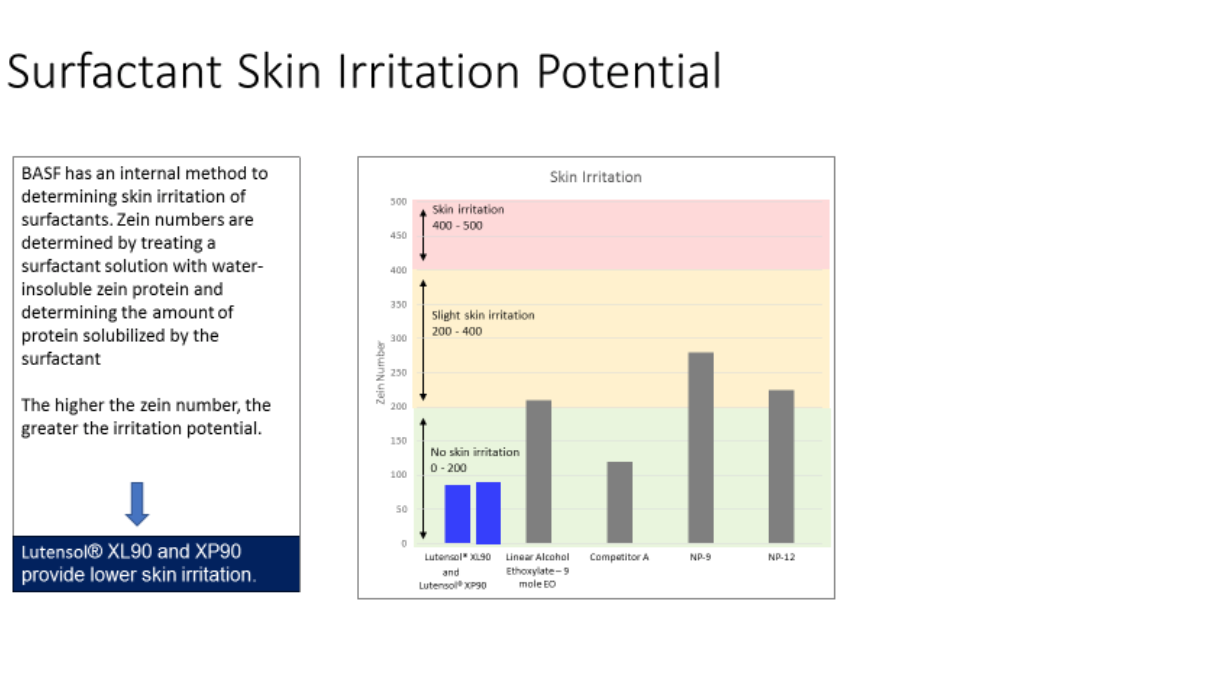Selecting a Surfactant for Iodine Teat Dips
Published
November 18, 2021
The goal of a teat dip is to remove the milk film that is left on the teats of lactating animals following milking, to reduce the colonization of bacteria that can cause mastitis. Mastitis is an inflammation of the mammary gland or udder caused by bacterial udder infections. Although teat dips can be formulated with a range of germicides, including chlorhexidine, peroxide, chlorine, chlorine dioxide, nisin, and others, iodine teat dips are the most popular type of dip on dairy operations throughout the world.Iodophor Iodine is a broad-spectrum germicide; and what makes it so popular is its efficacy against all mastitis-causing bacteria. Iodine’s microbicidal properties come from its oxidizing reaction with organic matter. When iodine is dissolved in water by complexing with water-soluble detergents, the result is an iodophor.There are a variety of surfactants that can be used to solubilize and complex iodine including:• Nonylphenol ethoxylates• Alcohol ethoxylates/alkoxylates• Sorbitan ester ethoxylates• Alkylpolyglucosides (APG)• Polyvinylpyrrolidones (PVP)• Ethylene oxide-propylene oxide copolymersWhen choosing a complexing surfactant, three key areas of consideration are:1. finding the option that is least irritating to the skin and least likely to remove the natural protective oil of the skin2. Selecting a surfactant that provides effective iodine stability3. Choosing an ingredient that is easy to formulate with
Reducing Skin Irritation
Preserving healthy teat skin helps maintain the animals' natural defense against infection. In addition, teat skin condition can affect milk let-down time*, milk-out time, and milking speed.*The time it takes for milk to flow from the alveolus down a system of tubes and ducts into a collecting area just above the teat.An efficient milking process involves extracting milk from the cows’ udder in the shortest period of time with the least amount of risk to the cow in terms of physical injury and mastitis. Chapped or cracked teat skin also provides more places for bacteria to hide and survive.The Zein test uses the dissolution of a soluble prolamine protein (similar to keratin and found in corn), as a proportional measurement of skin irritation potential. The Zein number for both Sodium Lauryl Sulfate and NP-9, illustrates potential for skin irritation. The Zein number for BASF surfactants Lutensol® XL90 and Lutensol® XP90 was significantly lower, demonstrating very little potential for skin irritation.

Stable Iodine Solution
In order to be considered stable, a formula must maintain iodine levels over time. Lutensol XP90 maintained close to 0.5% iodine after eight weeks, whereas the iodine solution with NP-9 lost most of the iodine by eight weeks. BASF’s Glucopon 600 UP was tested as a 100% bio-based option for complexing iodine. The formula with Glucopon was more stable than NP-9 but lost more iodine than Lutensol XP90.

Ease of Formulation
A surfactant is easy to formulate with if it quickly solubilizes and does not form gel phases. Even at high concentrations, Lutensol® XP90 and XL90 solubilize rapidly in an aqueous formulation and do not form a gel phase. Both Linear AE – 9 EO and NPE – 9 EO took significantly longer to dissolve at room temperature and both formed gel phases at 50% concentration.
Additional Considerations
Many teat dip formulas are enhanced with rheology modifiers and pluronics like ethylene oxide-propylene oxide copolymers. These additions will affect the behaviors and reaction times of surfactants and should be taken into consideration when selecting a complexing agent for iodine in your teat dip formula.


